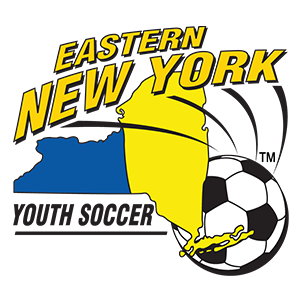By Tim Bradbury, Director of Coaching, Eastern New York Youth Soccer Association
You would hope or assume that all or least part of the annual soccer calendar could be devoted to long-term player development and learning, a time to get some much-needed rest before starting some well-planned training. How wrong you would be.
As we head into the “winter soccer period” which in the Northeast of the US is typically a period from December through to March consider some of following key factors as you plan your winter soccer diet.
Let us begin with the basics:
1) At the end of a full fall season with regular training and games the best thing to do IS REST. Youth players of all sizes, ages and levels of development can benefit from a soccer rest.
2) INDOOR, OUTDOOR conundrums. Again you would assume common sense would rule the debate, again you would be mistaken. Although US Soccer does have cold weather guidelines. The two charts shown below should help:
The chart above simply shows the more wind the colder it feels, best to be governed by the real feel temp that your phone weather app shows.
The chart below takes that real feel temp and tells you if it’s suitable to train or play:
3) Sensible outdoor winter training has a definite high activity zero standing still look and feel to it. All the players should be active throughout and learning should take place through the activity and not the coach standing, the players still for long periods of time while they share their thoughts about the game.
4) Sensible indoor training also has a definite look and feel about it. Perhaps the best starting point is for coaches to ask their players , “in this space what parts of the game do you think we can train?” Most indoor spaces lend themselves to a soccer diet based on 1v1, 2v2, 3v3 and possession-based activities––not crossing, finishing and 11v11 games.
5) Sensible indoor coaching also should fit the context: small space, quicker pressure, quicker decisions equate to less coaching interference. Players should be able to enjoy making decisions and reflecting on their success as coaches pose questions post-action.
6) The final conundrum revolves around the debate on which environment is likely to deliver the most development. Another situation that ultimately revolves around the quality of the coach managing the situation. I offer the following suggestions with the options of futsal, indoor training, indoor tournaments in purpose-built facilities, indoor tournaments in school gyms:
Futsal-Quick, free flowing, touch intensive game full of player decisions and freedom when coached correctly, meaning players are free to be independent thinkers and decision makers.
Indoor training-A pressure free chance to simply focus on player development that if approached this way should be a great chance for learning to take place.
Indoor tournaments in purpose-built facilities-Assuming they do not squeeze unrealistic numbers on a field, should replicate the time and space the players get in their regular games. Too frequently pressure becomes too much due to the proximity of the parents and coaches all wishing to shout out commands to the unfortunate participants
Indoor tournaments in school gymnasiums-I would try and avoid typically too many kids in to small a space and a very intense win at all costs atmosphere that do little for player development.
Street Soccer-perhaps the best option of all on those days where the temperature cooperates would be to offer to sit in a chair and read a book while a group of kids set up a traditional street soccer game with no adult interference. Let them pick the teams, the rules, the size of the goals and everything else.
It is appropriate to finish this monthly piece with a seasonal wish that everyone have a truly wonderful holiday and remember to try every day to spread a little kindness and laughter to all you meet.

